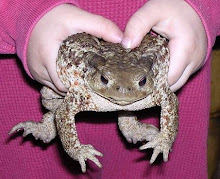Monday, February 20, 2012
Scales (using a rotary drill for woodblock)
Well, I had been looking for an excuse to use this tool.
My neighbor is a dentist, and when I asked to borrow a drill to put up some picture frames, he apologized saying all he has at home is an old foot-controlled, rotary dental drill; "like a Dremel", he added.
Oh, really? I asked.
I never did get around to hanging the mirror but I've had his drill with a small box of assorted bits for two weeks now (I promised to bring it back soon).
I like carving by hand but there are some jobs that I am still too inexpert to do well or quickly.
When I decided to do a lizard the idea of the scales presented itself. Either to carve individual scales or what I've done here,
Remove the scales with a rotary tool.
There is a base color for the lizard carved on another block (it will be yellow-green) and this block will be printed over it with a darker shade creating the shadows and spaces between the scales. Or, that's the idea.
Washing off the hanshita/drawing will cause the wood to swell and some of this detail will vanish and a trial proof will tell me if I need to reopen or remove some areas.
Proofing and printing will tell.
This may be another case where the block is just way more interesting than the resulting print.
It's a noisy tool and spits little bits of wood/dust pretty much everywhere. I was using a very small, conical dental burr and it made pretty small holes but it is not a tool I would enjoy to use very often.
(P.S. sorry about the yellow photos--the flash made all the detail vanish so I did it with just the late afternoon light and the desk lamp--causing the yellow cast.)
Labels:
dremel,
lizard,
lizard skin,
moku hanga,
scales,
woodblock print
Subscribe to:
Post Comments (Atom)




can't wait to see the proof!
ReplyDeletewow beautiful block! as d.moll just said I really can't wait to see the print!
ReplyDeleteThat is one sexy lizard! I think you're right that some of the smaller holes will close up as the wood swells with moisture from the printing. I've been tempted in cases like that to roll on some water based etching ink instead. I did that once and it came out well, although the etching ink had to be done last, and I had to adjust to the slower drying time of the prints. It's a beautiful block.
ReplyDeleteWhat a tease! That is a gorgeous block and I can't wait to see the finished print. I can see the benefit of the tool if it wasn't for all the noise.....
ReplyDeleteWow! That looks fun! I can't wait to see how the proof will look. I want to try the "dremel technique" too!
ReplyDeleteEager to see the print. I did some Celtic Lizards (two entangled as one) in college and used a wide U groove tool and just stamped it up and down on a straight vertical to make the scales. It worked great! Not near as much fun as a rotary tool, though...
ReplyDeleteThanks all.
ReplyDeleteYes it was fun to use.
The spherical bit ( a 1/8" spherical drill bit and this conical bit were both pretty useful for pulling out circles or ovals. Using them to "Draw" carving out a line by moving it linearly was less successful--it tended to skip and wander and it was hard to control. Mostly I could put these small cuts/circles really close to one another with out breaking off the sides of cuts.